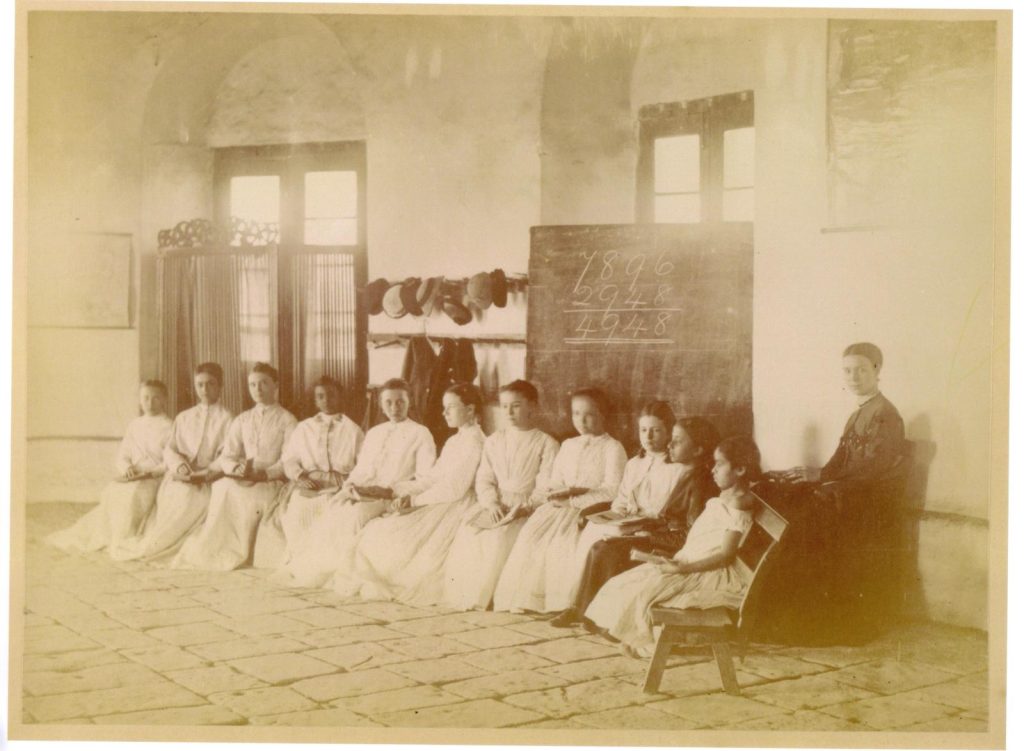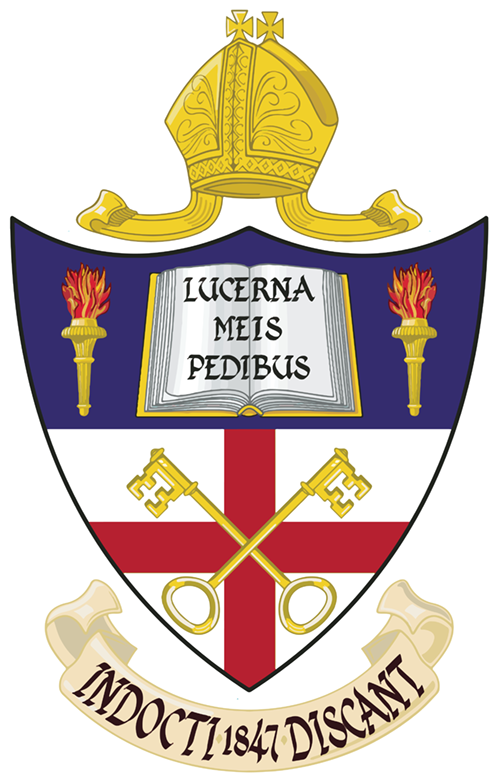Karachi Grammar School
History
The Physical and emotional heart of the school

The Foundations of the School
The Reverend Brereton, the first Chaplain of Karachi, founded the Anglo-Indian School and provided the accommodation for this at his residence. Initially, there were only a handful of students. In the 1850s, Sir Henry Bartle Frere framed rules for the management of the school, and a Managing Committee was appointed. Those rules form the basis of the present Constitution of the school, and by his actions Frere secured his place in the school’s history.
Extending the school’s premises was the next step. Consequently, the reorganised school was formally opened on the 1st of November 1854 with great celebration. The enlarged school was now called the Kaurrachee European and Indo-European school. A staff was engaged consisting of a master, Mr A H Maher and two mistresses. It was Mr Maher who introduced the school’s motto, indocti discant – let the unlearned learn. It is a phrase from Horace, and its first recorded use was in 1871.
The number on roll grew from 85 in 1855 to 128 a decade later.

New Beginnings
In 1874 the school was at a crossroads. This time it was the Rev. G B Streeton, Chaplain of Karachi and Hon. Secretary of the school, who came to the rescue. A new school building – somewhat like, but not identical to the one we see today and sadder – was opened for boarders on the 27th of February 1875. The role, which had declined in recent years, rose from 75 in 1875 to 90 in 1876. At this time, Mr Edwin Latham and his wife were appointed headmaster and head. There were six teachers for 90 children — a pupil-teacher ratio of 15:1.
This was a time for optimism with new school premises, increasing numbers on the role and the prospect of greater stability among the staff. For the first time, the school began to look like one of the better and more ambitious schools in England and in 1879, to match that ambition, the Kurrachee European and Indo-European School changed its name. Karachi Grammar School was born!

The Early Years
After a brief but successful term as Headmaster, Mr Taylor left and was succeeded by the colourful Mr Taylor. He was a strict disciplinarian who sported a flourishing beard – cut off one night while sleeping by one of the high-spirited senior boys. By 1901 there was a concern about the balance between education and qualifications. It could also be said that the old-styled disciplinary methods were now out-of-step with the times. He was asked to leave; however, after a brief hiatus, which included founding his own school, Mr Taylor returned until his death in 1904.
The first use of the title Principal was in 1909 when Mrs Leedham was designated the role while her husband was on sick leave.
By 1910 when Mr and Mrs Macnee took over, the school continued its upward trajectory. It was reported by the Management Committee that ‘children were said to be happy, the classrooms were clean and well kept, discipline was excellent, and the increase of attendance speaks well for the popularity of the institution.’ Resourcing the libraries and a focus on sports development were two significant priorities.
In 1912 Bernard Tobin became the first student from the school to take the Senior Cambridge School Certificate Examination. The first in a long line of highly successful students taking and passing the Cambridge examinations right until present day.
A major building project started in 1915. This included a third storey and laboratories. After being housed in temporary accommodation, the school re-opened in its new premises in November 1916. Karachi Grammar School as we know it was born.

In war and Peace
In 1917, there were 192 students on roll, and it continued to fluctuate over the next few years. In 1915, having reached his 76th birthday, Mr Macnee retired after having a very positive impact on Karachi Grammar School. His successor, Mr Coates, brought about fundamental changes which ‘raised the school to a high position, and by his energy and ability he was successful it there during the whole period of his headship.’
Innovations included the first annual athletics sports day, creating a House system, the re-introduction of Scouts and Guides, the adoption of navy blue and burgundy as the school colours and a homework policy.
A new headmaster, Mr Eric Falconer Masson, arrived in 1933. By 1938 the school roll had risen to 280. He also underlined the importance of the Cambridge School Certificate for young people entering the world of work. There was also an awareness of student fitness and health which led to the further promotion of physical education and sporting activities.
The first issue of The Grammarian appeared in November 1936. Urdu was introduced into the timetable in 1939, and in the same year the Managing Committee became ‘The Governors’. And by the time Mr Masson left, the school no longer had a ‘Head Master’ but a ‘Principal’.
With the outbreak of the Second World War, Eric Masson volunteered for military duties and left the school in October 1940. He rose to the rank of Major and was released from service in 1947. He was succeeded as Principal by the Rev. Charles William Haskell.
With the increased military presence in Karachi, the school roll rose to 530 by June 1945.
In 1945 it was time to dust oneself down and face the future; however, the ending of the war did not mean a return to the life Grammarians had known before the outbreak of hostilities. The world was changing and the future uncertain.

The early years of independence
The increase in roll meant that more classrooms were needed. This led to the construction of the War Memorial Building in 1948. Shortly after the formation of Pakistan, the school celebrated its centenary. The number of students continued to grow. By January 1953, there were 1005 students. And the number continued to increase after that. Also, the school was now firmly part of a post-colonial community in Karachi and shared the values of a developing Pakistan.
A new three-storey block was built in 1953. In 1954 an additional House was introduced – Ridley. The House colours were purple, and it survived until 1955!
1955 brought with it renewed focus on the quality of education provided by the school. Syllabuses were revised, and the new report books were introduced. These were the forerunners of those still used to this day. The Cambridge Higher School Certificate was introduced. So that students would now stay at school for two more years to prepare for this early equivalent of a level that led directly to university entry in the UK and across the globe. During this time, new clubs and societies were formed, including the Einstein Society.

Uncertain times
In 1962 the Kindergarten Section moved to the compound adjacent to Holy Trinity Church and opened in March. Urdu became a compulsory subject throughout the junior and senior schools in 1962. KGS became the first school in Pakistan to participate in the Duke of Edinburgh’s Award scheme. A suggestion the Duke himself had made when he visited the school two years before.
By 1970 the number on roll was 1290. The tradition of building successful links with England’s best universities and colleges had been developing rapidly. Students were now also gaining places at the best institutions in the USA. George Dolman continued as Principal until the summer of 1970. Under his leadership, the school had to continue to develop high academic standards and made great strides forward.
Mr Papworth was at the helm from 1070 until 1974. He was joined by colleagues who would carry the school forward for many years to come. These included Mrs Stella Jafri (head of the Kindergarten Section), Mrs Norma Fernandes (head of the Junior Section) and Mrs Roshan Muncherji (head of the Middle Section).
The first issue of Pulse was published in October 1973.

Preparing for Change
Three new developments during the eighties are worth noting.
By 1980, boxing had ceased at the school. The Annual Boxing Tournament had traditionally been the main way of celebrating Founders Day.
In 1986 it was decided to change the start and end of the school year from January, December to August July. More than a century of tradition was swept away, but for the very good reason that this brought KGS in line with other international schools and also with the academic year of most universities and colleges in the UK, USA and elsewhere. Related to this was a decision in 1987 to take the Cambridge examinations in May, June rather than November.
The realisation that to gain admission to the most prestigious colleges in America would require not only excellent academic results but also a record of involvement in many extracurricular activities led to the establishment of a very comprehensive enrichment programme.
The school mooted the idea with Cambridge Examinations of setting O-level papers in Islamiyat and Pakistan Studies. This idea was adopted and remains to this day.
Initially acting Principal, Mr Wrigley was confirmed in the post in March 1985. By which time, he was fully engaged in the project to build new premises in Clifton for the Kindergarten and Junior Sections.
After Mr Wrigley left Karachi in the summer of 1989 to pursue advanced educational studies at the University of Birmingham, Mr Gordon Brown arrived in January 1990. With his wife, Mrs Hilary Brown, appointed as a teacher trainer, they forged a strong team, overseeing the first phase of the school’s planned expansion and the inevitable greater demand for quality teachers.
In February 1991, it was confirmed the new school buildings would be open from the beginning of the next term in August. There were challenges ahead with a much higher pupil number of 1000, but the school’s modern transformation was successfully underway.

The millennium dawns
In 1997 the school celebrated its 150th anniversary. The Pakistan Postal Service Corporation produced a special commemorative stamp.
In June 1999, a fourth House was created in honour of Mr J L Papworth, the long-serving member of staff who had worked and lived at the school until his death in 1988. The House colour would be Cambridge blue and its motto ‘Courage Conquers All’: Virtus Vincit Omnia.
The College Section campus in Clifton opened in August 1999. The original building in Saddar now housed the Middle Section (Years 7 – 9).

The Modern School
The future looks bright. KGS is fortunate to have good facilities, and there are plans to enhance them further. The curriculum evolves, including a revitalisation of humanities and arts subjects. To achieve even greater effectiveness in the classroom, the contribution of technology is critical. Digital resources and a paper-free environment are a focus for the whole school community.
Teacher training and development is firmly on the school’s agenda, with learning not just being part of the motto but an intrinsic part of the belief and vision of the school.
Our learners’ well-being and life opportunities lie at the heart of all that we do. They continue to excel academically, in national and international competitions and secure places in colleges across the globe. They are our ambassadors. And they are the reason that the school continues to thrive.
